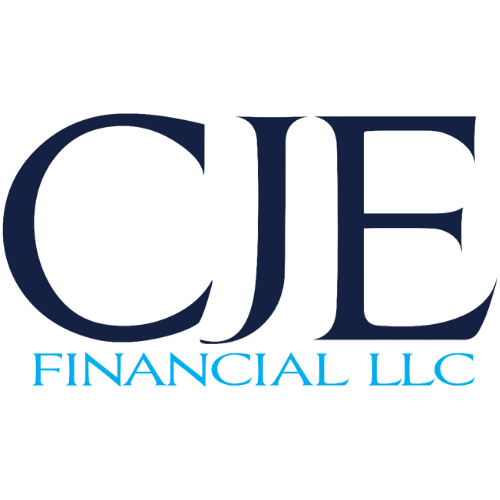Your Guide to Building Your Financial Future
Establishing goals for your financial future isn't one-size-fits-all —what works for you might look different than what works for someone else. Let your journey towards long-term financial planning begin today, because it’s never too early to start.
What Is Financial Planning?
Financial planning means different things to different people. In our opinion, you don’t have to be wealthy or have all your goals figured out from the beginning, but you do need to start somewhere.
With the right strategies in place, you can strive to:
Pay off debt, including credit cards and student loans
Prepare for unexpected emergencies
Save for future needs, while still enjoying the present(1)
Strategies for Financial Planning
1. Get Started
The first step in financial planning is to just get started. Begin by setting clear financial goals that are most important to you. After all, you can't achieve goals that you haven’t defined.(1)
2. Take Advantage of Employer Retirement Contributions
If your employer offers matching contributions to a retirement account, make sure you're taking full advantage of this benefit.(1)
3. Tackle Your Debt
High-interest debt, such as credit card balances, can hinder your financial plans. Start by making a list of all your debts and their interest rates. Focus on paying off higher-interest debts first to make the most of your payments. Once you've handled the high-interest debt, consider strategies to tackle low-interest student loans or other low-interest debt.(1)
Education Savings: Planning for Your Child’s Future
Preparing for your child's education is another key component of financial planning. If you haven't started saving yet, it's never too late to begin. The earlier you start, the more you can leverage savings strategies to minimize reliance on student loans and use any available financial aid.(2)
A popular rule of thumb for funding college costs is the one-third rule:
One-third of costs come from savings and investments
One-third comes from income and financial aid
One-third comes from student loans (2)
529 Plans: An Efficient Way to Save
A 529 plan is a popular way to save for a child's education. This tax-advantaged account is designed specifically for college savings, allowing you to invest funds for future use to pay for education while providing an opportunity to grow your money tax-free.
One of the biggest advantages of a 529 plan is its tax benefits. Contributions may grow without being taxed, and withdrawals for qualified education expenses are also tax-free. Additionally, your state may offer state tax deductions or credits for contributions made to a 529 plan.(2)
Unlike other savings accounts, generally 529 plans have no income, age, or contribution limits. However, states do set aggregate limits on the balance that can be held in a 529 account per beneficiary, with limits ranging from $235,000 to $575,000.(2)
Coverdell Education Savings Accounts (ESAs)
A Coverdell ESA is another tax-advantaged account designed for education expenses. Like a 529 plan, an ESA lets you withdraw funds without penalty if they're used for educational purposes, including tuition, fees, and even elementary or secondary school costs.(2)
However, ESAs have income limits. You can’t contribute if your income exceeds:
$110,000 if filing as "single"
$220,000 if filing "married filing jointly"
Additionally, contributions are limited to $2,000 per beneficiary per year. Funds must also be used by age 30, or they may be subject to penalties.(2)
Health Savings Accounts (HSAs): More Than Just Medical Savings
An HSA offers a unique combination of short- and long-term benefits. While it's mainly used to save for medical expenses, it may also be able to help build wealth for retirement.(3)
HSAs are tax-advantaged, meaning contributions are made with pre-tax dollars, and money inside the account may grow tax-free. As long as funds are used for qualified medical expenses, you won't pay taxes on withdrawals either.(3)
You can contribute up to $4,300 for self-only coverage or $8,550 for family coverage in 2025. Starting at age 65, there is no penalty if you use HSA money for non-qualified medical expenses; however, you will still need to pay income tax, much like when making withdrawals from other retirement savings accounts, such as traditional 401(k)s or IRAs.(3)
Unlike 401(k)s or IRAs, HSAs are not subject to required minimum distributions (RMDs) once you turn 73.(3)
Closing Thoughts
Establishing a financial plan is unique to each person, but the steps to get there are universal. By setting goals, tackling debt, saving for education, and leveraging accounts like HSAs and 529 plans, you can create a foundation for your financial future. The key is to start planning today, because the sooner you get on track, the better equipped you'll be to handle whatever life throws your way.
Article Sources:
(1) “What is financial wellness and why is it important?” Vanguard, https://ownyourfuture.vanguard.com/content/en/learn/financial-planning/what-is-financial-wellness-why-important.html, Accessed February 13, 2025.
(2) Intuit Blog Team. “Smart Strategies for Saving Money for College.” Intuit, November 1, 2024, https://www.intuit.com/blog/innovative-thinking/financial-tips/saving-college/, Accessed February 13, 2025.
(3) Fidelity Smart Money. “What is an HSA, and how does it work?” Fidelity, August 14, 2024, https://www.fidelity.com/learning-center/smart-money/what-is-an-hsa, Accessed February 13, 2025.

